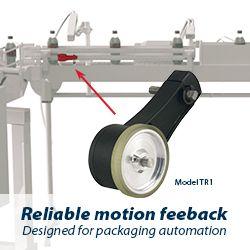Jamare Bates is a licensed professional engineer and FAA-certified remote unmanned aircraft vehicle pilot who heads UAS operations for Black & Veatch, a global construction and engineering company.
How Utilities can use Drones in Planning a Resilient Power Supply
Jamare Bates | Black & Veatch
Tell us a bit about Black & Veatch and it’s roll in the UAV industry?
Black & Veatch is a proven industry leader in applying drone technology.
We were recognized on the InformationWeek Elite 100 list of innovative business technology users for a 2015 drone project with Aeryon Labs. Our application of drone technology to reduce the risks and costs of equipment tower inspections was also recognized as one of the 20 Great Ideas for 2015 by the publication’s editors.
This past summer, we partnered with the Kansas Department of Transportation to help test the safety of beyond-line-of-sight use of unmanned aerial vehicles (UAVs).
What was the purpose of the Ameren project and other innovative UAV testing that Black & Veatch is doing?
Part of the Black & Veatch involvement in this project is demonstrating our leadership in Beyond Visual Line of Sight (BVLOS).
 For Ameren, the project was about finding better and safer ways to have aerial infrastructure inspections and trying to figure out how this is going to happen, what it’s going to look like and how the technology is going to work.
For Ameren, the project was about finding better and safer ways to have aerial infrastructure inspections and trying to figure out how this is going to happen, what it’s going to look like and how the technology is going to work.
Working with Ameren and Collins Aerospace was a chance to take proof of concept and put it in a real-life situation. For Black & Veatch, it was the opportunity to work closely with a great company and a good aerospace partner. It’s also important for us to innovate and push the limit of what technology could do. We think BVLOS is going to be the future of UAS operations.
How did Black & Veatch and its partners manage to do this safely, and what did they learn from it?
One of the things that is really important about this type of operation is that you must go through the FAA to get a waiver. The only way to do that is to prove you have a safe concept of operation by having an experienced team that are building and proving safe operations over and over.
So one of our partners – the University of Iowa – has a history of safe flight operations and testing, and they have manned aircraft pilots and UAV pilots. We were able to build off their experience in doing these types of operations safely and transfer that to operations with Ameren.
For Black & Veatch, in terms of our engineering and construction, safety is very important. Our safety planning and protocols always are a high priority throughout all operations. We share this company culture with Ameren and Collins, so that safety was paramount to the entire team. At Black & Veatch, we always believe that safety begins with the individuals and the team and precedes the execution. For that, we followed the specific plans and protocols that we outlined in the concept of operations. We stuck to those and made sure that if anything came up that was putting safety at risk, we weren’t going to go forward with the test.
To make a flight like this happen, there’s a ground control station that we set up as part of the operation. The one we put in place was temporary – a mockup of what a real ground control setup would be for these operations. At the ground control station, the pilot can monitor the entire flight electronically, always see the connection to the UAV and monitor the video feed as it’s moving through the route.
The ground control station will be essential to controlling these types of long-distance flights in the future. For this flight, because it was still under an FAA testing waiver, there were visual observers necessary to monitor the UAV while it was in flight. We had a manned aircraft chase plane with a visual observer having constant contact with the ground. FAA testing still requires visual observers to keep eyes on the UAV throughout the flight for testing purposes.
Do you have confidence these types of test flights might sway the FAA to ease restrictions of the UAVs?
The FAA is looking to industry to help develop these types of operations. This agency also is looking for hours and hours of safe flights that they can then point to and say, “For others wanting to do BVLOS, we have examples of safe flights you can follow.” The more hours and safe flights that the FAA has to fall back on, the easier it will be for them to eventually change the rules. From our perspective, these types of flights are essential to future rule changes that the FAA might make.
What kinds of drones are used commercially?
There’s a wide range. There are a lot of drones you’ll see at the store or online that serve a purpose. There are some small drones that do some simple Line of Sight (LOS) inspections.
But when you get into more complicated operations like what we did, you’re dealing with specialized aircraft that happens to be unmanned. In terms of cost, some of the smaller commercial drones are $1,000 to $2,000 – good for things like imagery and video. When you’re covering ten to twenty miles, you need more robust battery systems or, in this case gas power, the cost can get into the 10s, 20s or even hundreds of thousands of dollars.
For 80 or 90 percent of operations, there are quality drones on the market. Black & Veatch doesn’t use one specific type of drone; we’re more about finding the right drone that fits the customer’s needs. The drone is really just about getting a sensor up the air, and sometimes the sensor is more important than the actual drone.
What other types of sensors and detection can you use the drone for beyond LiDAR and cameras? Cameras are the first thing everyone thinks about. LiDAR is an important technology because you can make 3D models of assets and get accurate dimensions and measurements.
Other cameras that are becoming important are infrared cameras – you can see temperature variations, and that can help tell you that, for example, a solar panel is collecting solar energy as efficiently as it’s supposed to.
There are other cameras – hyperspectral – that can detect different wavelengths of light. They’re currently used to help judge the health of vegetation. Analysis shows that different plants, when they have different levels of health, will give off a different spectrum of light, and this type of camera can detect that.
There are other sensors in development – some for methane detection and other gasses. Black & Veatch believes that as time goes on, even more and more sensors that we’re not using or discussing at this time will be developed.
What are the broader applications of drones, in terms of aerial surveying of other forms of infrastructure (Disaster response, fire response)?
We’re seeing more and more of our customers asking questions about drones.
With some of the recent hurricanes and fires, the demand for drones in a disaster response application is really picking up. That’s often in a quick response application after a storm or event to help assess the damage.
But we’re also hearing of situations where drones are being used for monitoring risky situations to help predict when a type of event could happen. A lot of that is more about the analysis of the imagery and the data that’s coming through – another important aspect for Black & Veatch. And a lot of the disaster response applications are tools to augment existing, comprehensive emergency management plans.
Beyond disaster response, ultimately for BVLOS, companies like Amazon, FedEx and the postal service are interested in package delivery. Again, Black & Veatch sees the market trending this way over time.
Lastly, if you think of hyperspectral cameras and the large amounts of land that an agricultural customer would need to analyze, the agricultural market also is going to be an important market for BVLOS.
What do you envision as future commercial applications for drones that are not currently being discussed?
Outside of some of the bigger and more known opportunities such as emergency response, insurance, search and rescue, package delivery and other non-engineering inspection services, it’s hard to think of other aerial drone-based applications. Wildlife monitoring and security against poaching are some of the other ideas that also get discussed.
From a commercial perspective, drones can be land or sea-based, and there are potential applications for Unmanned Underwater Vehicles (UUV) in the future. Water quality monitoring, sea life tracking, exploration for undersea resources are some of the other potentials that could develop over time.
Are you working on any other projects that you would like to discuss here?
Many of the Black & Veatch projects on are customer-focused, making them less public in nature. We continue to look to innovate in the areas of emergency response. Looking at the recent East Coast hurricanes and the devastating fires in California, we have begun researching various emergency response technologies and programs to see how UAVs can be beneficial.
The content & opinions in this article are the author’s and do not necessarily represent the views of RoboticsTomorrow
Featured Product

